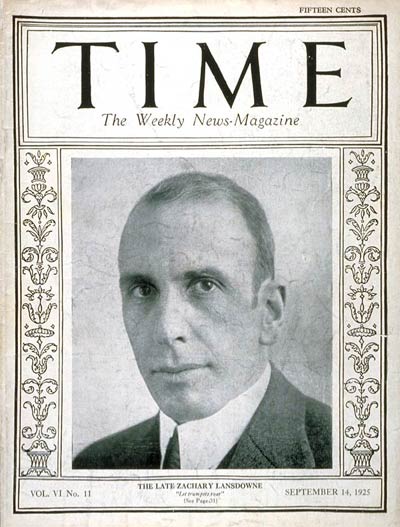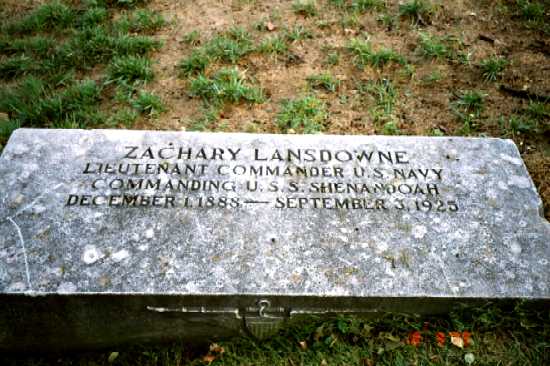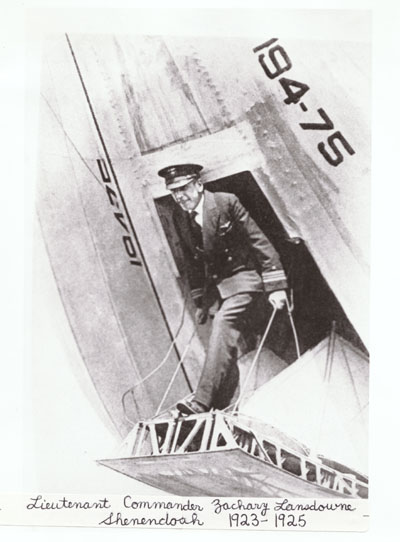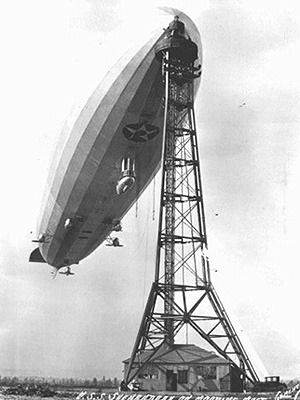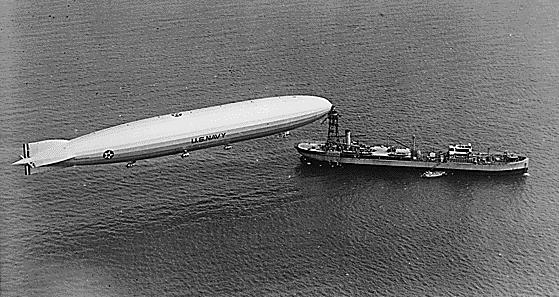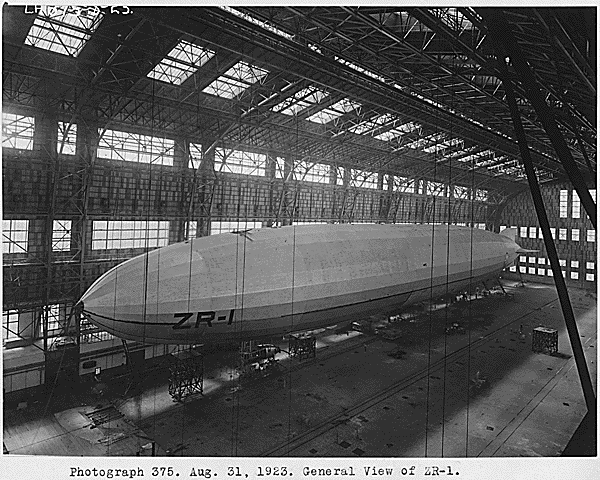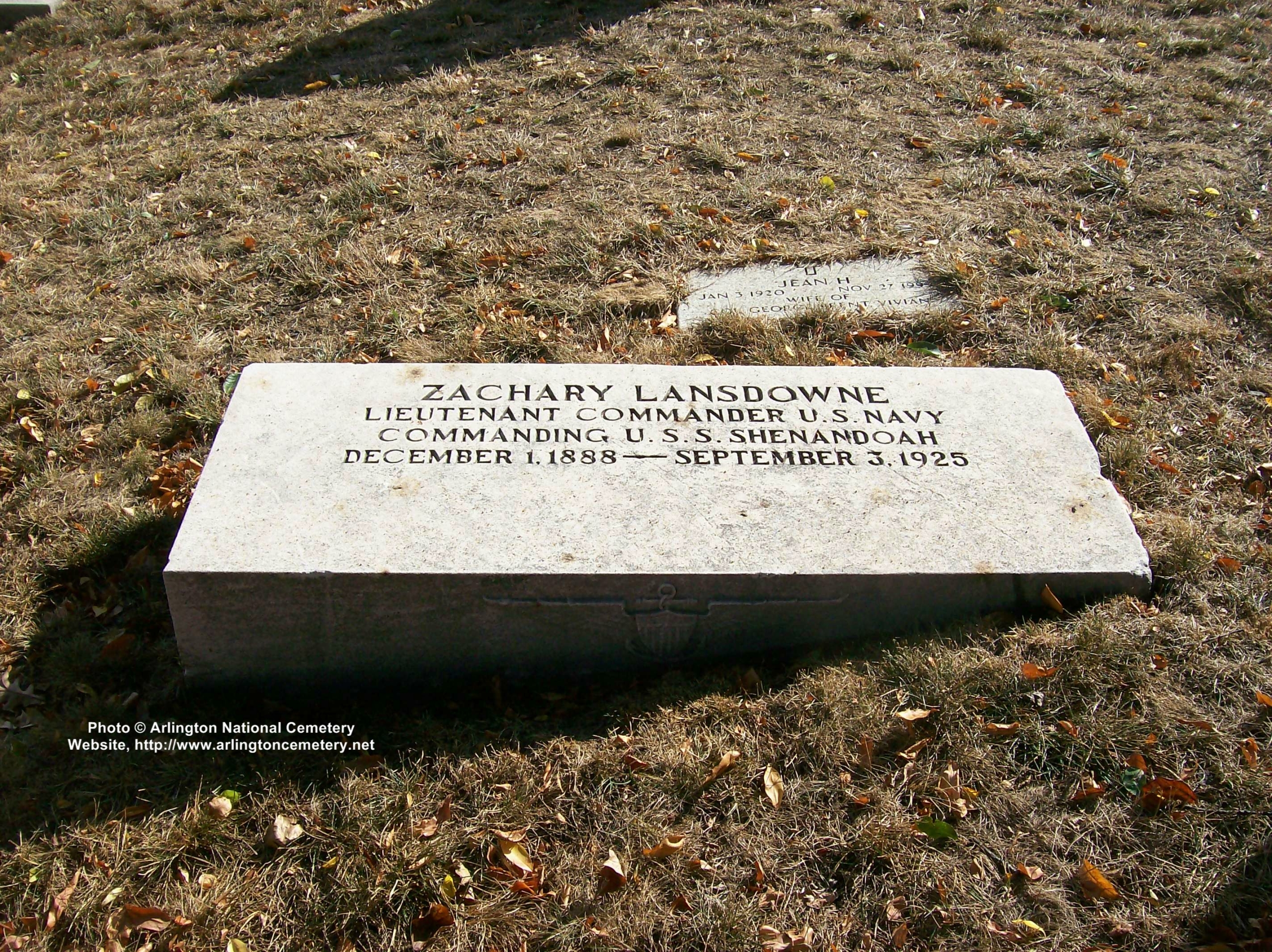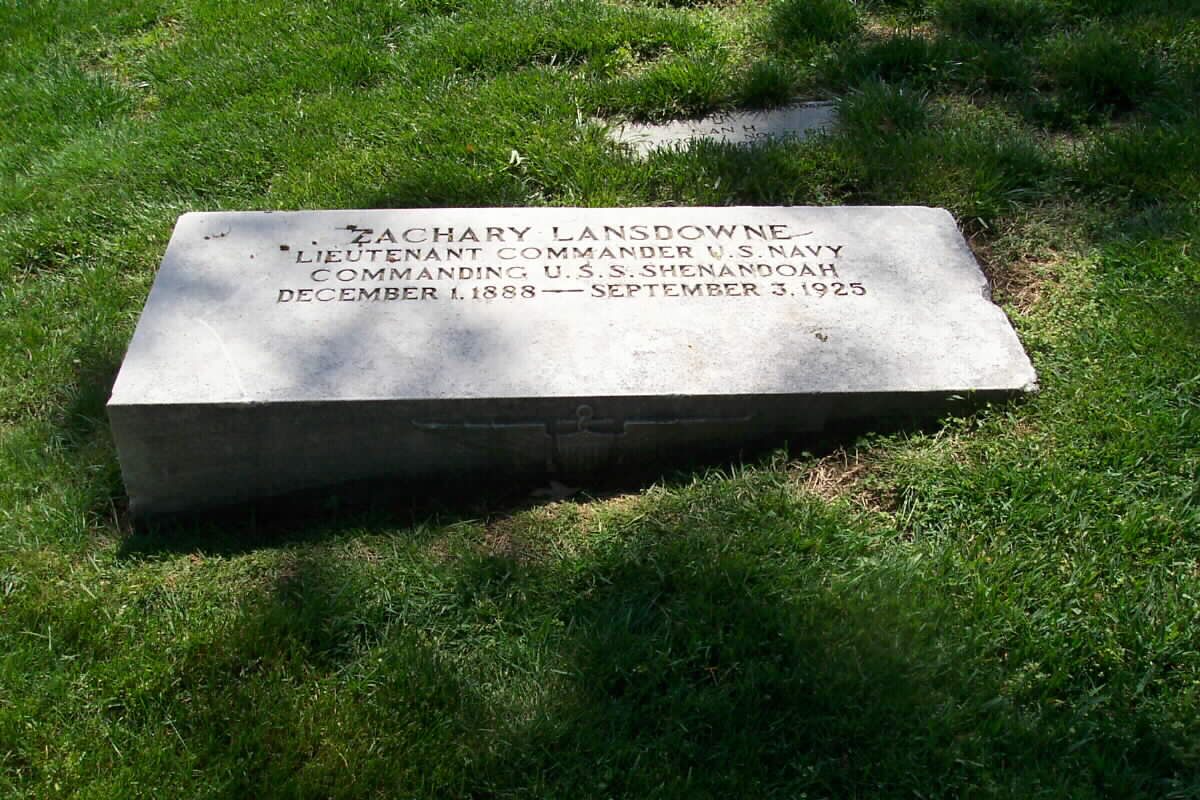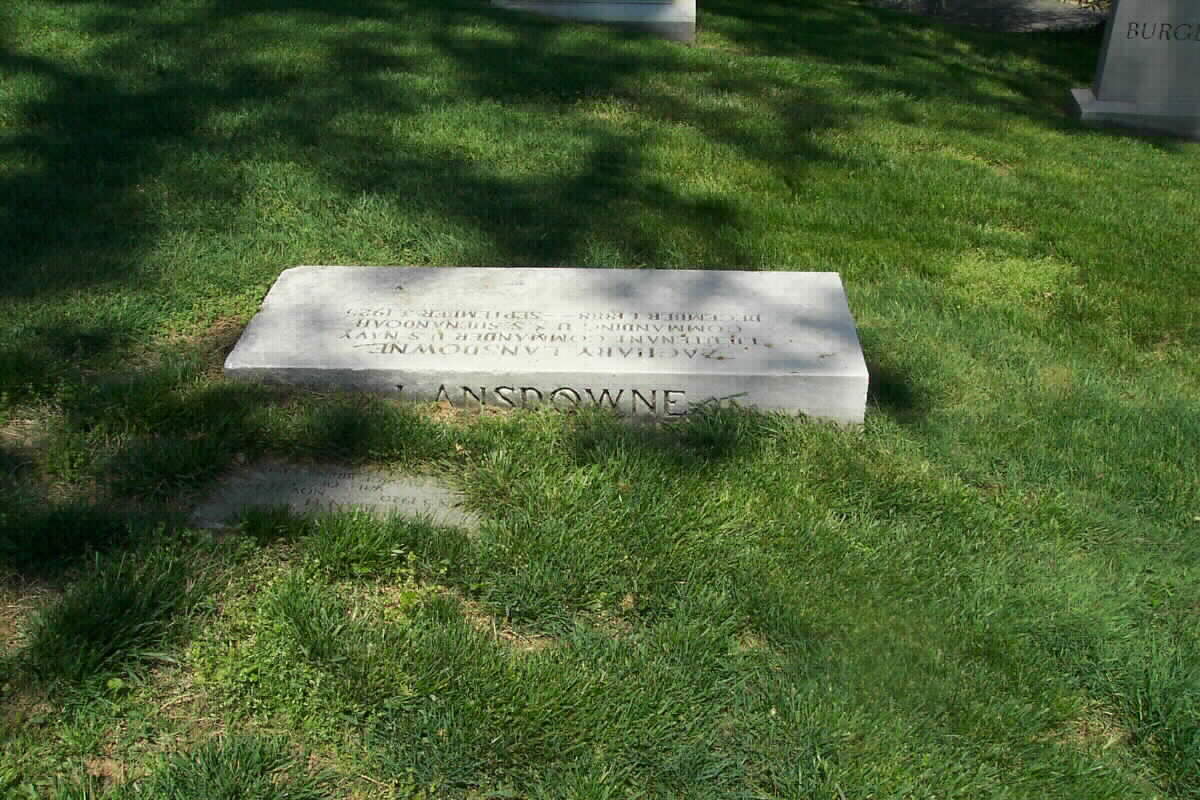Zachary Lansdowne was born in Greenville, Ohio, on 1 December 1888. He entered the United States Naval Academy in 1905 and graduated in 1909.
In June 1911, following two years' service aboard the battleship Virginia, he was commissioned an Ensign in the U.S. Navy. During the next five years Lansdowne served in the destroyer McCall and had recruiting and Naval Militia duty in Ohio. He then received aeronautical instruction at Pensacola, Florida, and Akron, Ohio. In September 1917, Lieutenant Lansdowne was sent to England for training in the operation of dirigibles. He spent the rest of the First World War, and the first months of 1919, at the Navy Department and at air stations in France.
In July 1919, Lieutenant Commander Lansdowne served on board the British rigid airship R-34 during its historic non-stop flight across the Atlantic to the United States. Service followed at the Navy Department, at Akron, Ohio, and as a White House Aide. He was Assistant Naval Attache in Germany in 1922-1923, during which time his duties involved negotiations that resulted in the construction of USS Los Angeles (ZR-3), the Navy's second rigid airship.
Lieutenant Commander Lansdowne took command of USS Shenandoah (ZR-1) early in 1924. Over the next year and a half he carried out an energetic development program with her, including operations at sea and a trans-Continental flight to California. While on a long-distance flight to the Midwest on 3 September 1925, Shenandoah encountered fierce weather conditions and crashed in southern Ohio. Zachary Lansdowne was among those who lost their lives in this accident.
The destroyer USS Lansdowne (DD-486), 1942-1949, was named in honor of Lieutenant Commander Lansdowne.
Born on December 1, 1888, Zachary Lansdowne was an early Naval Aviator and a friend of Army General Billy Mitchell.
He died in Ohio on September 3, 1925 in the crash of the dirigible USS Shenandoah. He was in command of the ship when it was struck by violent thunderstorms. A portion of the crew was killed (14 of 42 on board) and some of the others are buried near him in Section 4 of Arlington National Cemetery.
Zachary Lansdowne was one of the most promising officers in the U.S. naval air service when he was killed in the crash of the dirigible Shenandoah September 3, 1925, near Ava, Ohio. Lansdowne was just 36 when he died, but he already had earned national recognition. Probably following the example set by his uncle, Harry Knox – an Admiral in the U.S. Navy, Lansdowne enrolled in the United States Naval Academy at Annapolis, Maryland, and graduated with the class 1909.
He soon attained the rank of lieutenant and because of his exceptional fitness and ability was chosen as the American representative and observer to accompany the crew of the first airship, the British R 34, to fly across the Atlantic Ocean non-stop from East to West. He was climbing to fame when he was chosen commander of the Shenandoah. While flying the ship westward from its base at Lakehurst, he and his crew were struck by a squall of cyclonic proportions. The dirigible was torn apart, killing Lansdowne and thirteen members of his crew. Lansdowne's remains are buried in Arlington National Cemetery.
The subsequent Navy hearings untangled slowly, revolving about Lieutenant Commander Lansdowne. An engineer with extensive wartime airship experience in England, Lansdowne had proposed several design changes for the Shenandoah, one of which was later thought to be a direct cause of the disaster. The airship contained 18 automatic gas valves that controlled the amount of helium in the gasbags, thereby enabling the ship to maneuver up or down. Lansdowne contended, accurately, that too much valuable helium was being wasted in this system. At his suggestion, 10 of the valves were removed and the remaining eight were converted to manual operation. The Navy concurred, estimating that these changes would allow for a safe rise at cruising height of only 400′ per minute, but in the hysteria hat followed the disaster, some thought that it was Lansdowne's own suggestion that “sealed the fate of his command.”
The surviving officers remained overly loyal to their commander. In fact, they created suspicion by their attempts to disprove the accusation. To complicate matters further, souvenir hunters had been much too thorough, ravaging the wreckage for anything of interest — including all of the valves. Investigative experts had to rely on theory alone to prove the valves capable of releasing sufficient gas to accommodate the effects of the storm.
But the experts' testimony became the decision of the court –aerodynamic forces had brought the ZR-1 to the ground. The gasbags had not burst from pressure. The ship had not been mishandled. There had been no explosion. The 28 survivors in the three twisted hull sections had, in fact, owed their lives to the Navy's foresight and innovation; gas bags were filled with rare, inert helium, not hydrogen.
USS Shenandoah
Michael Robert Patterson was born in Arlington and is the son of a former officer of the US Army. So it was no wonder that sooner or later his interests drew him to American history and especially to American military history. Many of his articles can be found on renowned portals like the New York Times, Washingtonpost or Wikipedia.
Reviewed by: Michael Howard

